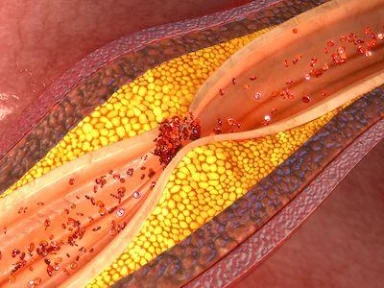{
event: "article_read",
name: `Is Clopidogrel a viable first choice P2Y12 inhibitor for DAPT after PCI?`,
author: ``,
tags: `Cardiovascular | Atherothrombosis`,
publication_date: ``,
interaction_type: "content"
}
Is Clopidogrel a viable first choice P2Y12 inhibitor for DAPT after PCI?
Main Takeaway
- Clopidogrel-based DAPT (CDAPT) was associated with a lower risk of bleeding events, major adverse cardiac and cerebral events (MACCE), and net adverse clinical events (NACE) than ticagrelor-based DAPT (TDAPT)
- Risks were similar between CDAPT and prasugrel-based DAPT (PDAPT)
Why This Matters
- The findings from this study support clopidogrel as a viable first-choice P2Y12 inhibitor for DAPT after PCI in an East-Asian patient population
- Recent European guidelines recommended potent P2Y12 inhibitors (ticagrelor and prasugrel) over clopidogrel in acute coronary syndromes, due to their rapid onset of action and strong antiplatelet activity
- Their safety and effectiveness in the East-Asian patients has often been questioned
- Recent European guidelines recommended potent P2Y12 inhibitors (ticagrelor and prasugrel) over clopidogrel in acute coronary syndromes, due to their rapid onset of action and strong antiplatelet activity
Study Design
Retrospective study: 57,197 patients in the South Korean HIRA database underwent PCI (from January 1 2014 to December 31 2016) and were treated with DAPT including aspirin and one of three P2Y12 inhibitors
- Clopidogrel + aspirin (CDAPT) (n=37,500)
- Ticagrelor + aspirin (TDAPT) (n=15,723)
- Prasugrel + aspirin (PDAPT) (n=3,974)
Key exclusion criteria:
- Age <18 years as of the index date (n=6)
- History of PCI or CABG during the baseline period (n=3,434)
- Severe liver or chronic kidney disease (stage 4-5, n=1,315))
- Use of P2Y12 inhibitors during the baseline period (n=39,134)
- Use of oral antithrombotic agents (except low-dose aspirin) during the study period (n=19,849)
Key outcomes: the risk of bleeding events, risk of MACCE (a composite of all-cause death, myocardial infarction, stroke and revascularisation), risk of NACE, persistence and adherence rates
Key Results
The risk of bleeding events, MACCE, and NACE was significantly higher in the TDAPT group versus the CDAPT group, both at 1-year and in the prolonged periods
- Risk of bleeding event: 1-year hazard ratio (HR) = 1.37; 95% confidence interval (CI), 1.28–1.46; prolonged HR = 1.39; 95% CI, 1.31–1.47
- Risk of MACCE: 1-year HR = 1.10; 95% CI, 1.03–1.18; prolonged HR = 1.24; 95% CI, 1.16–1.31
- Risk of NACE: 1-year HR = 1.23; 95% CI, 1.18–1.29; prolonged HR = 1.31; 95% CI, 1.25–1.36
- No significant differences were reported for the risk of bleeding events, MACCE, and NACE between the PDAPT and CDAPT groups (1-year and prolonged periods)
The use of clopidogrel correlated with better adherence to DAPT than potent P2Y12 inhibitors
- 34.9% of patients remained on CDAPT until the end of the prolonged period, whereas only 7.8% and 9.2% remained on TDAPT and PDAPT, respectively
Limitations
- Any association between P2Y12 inhibitors and clinical outcomes should be interpreted cautiously, owing to the observational nature of the study
- There was a lack of information regarding lesion complexity and location at index PCI, baseline laboratory findings, and cardiac function
- The information bias from voluntary/involuntary miscoding may lead to underestimation or overestimation of the outcomes
- The reporting of death was limited to in-hospital death
- It is difficult to generalise study findings in ethnic groups other than the East-Asian populations
- Reasons for P2Y12 inhibitor discontinuation were not identified
- Lee Y, Lim YH, Park Y, Shin J. Real-world bleeding and ischemic events in Asian patients on P2Y12-inhibitors after percutaneous coronary intervention: A national claims data analysis. Adv Ther. 2020. doi: 10.1007/s12325-020-01526-4. Epub ahead of print.
Related articles
MAT-BH-2200183/v2/Jun 2023


.webp/jcr:content/jcr_content%20(3).webp)

